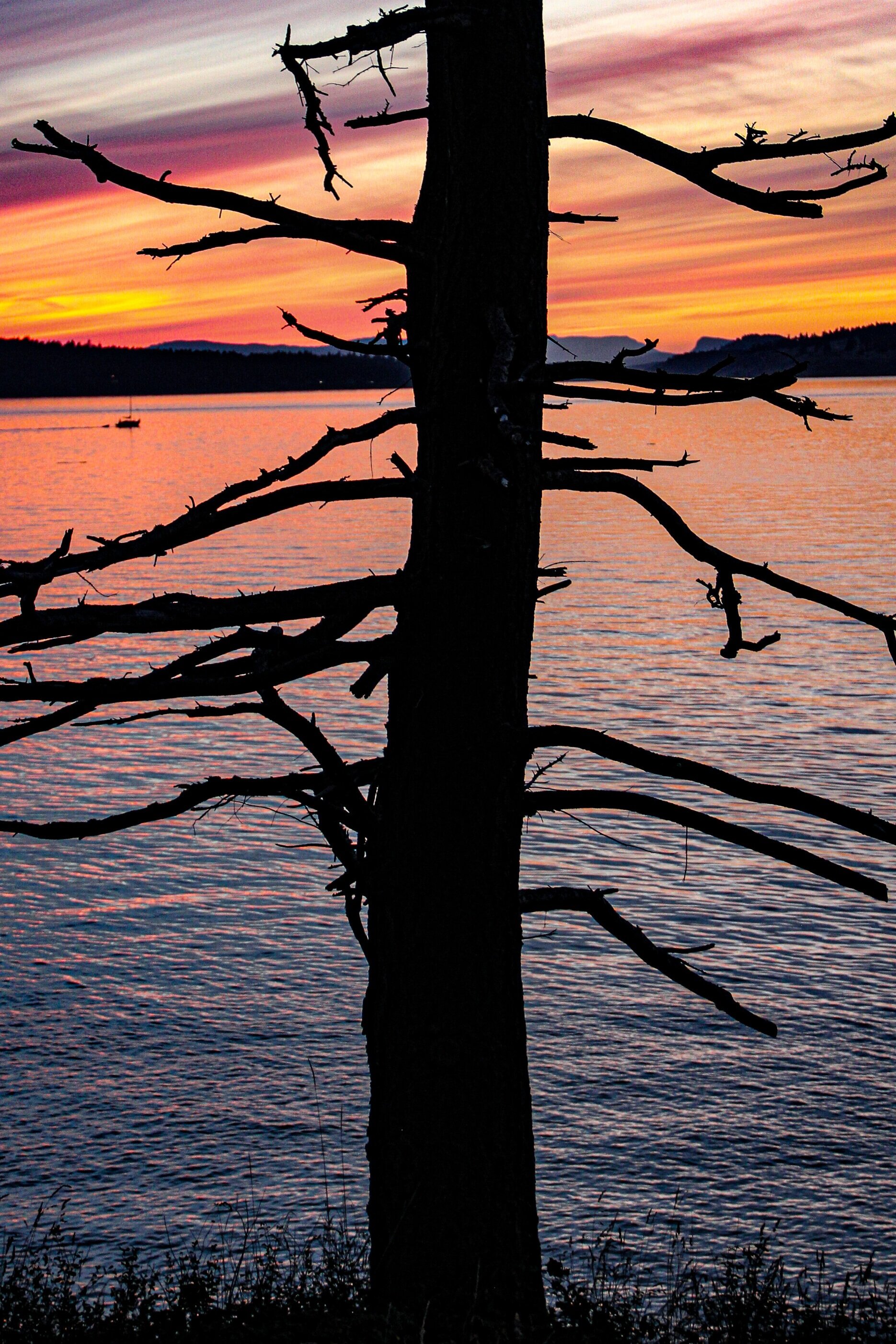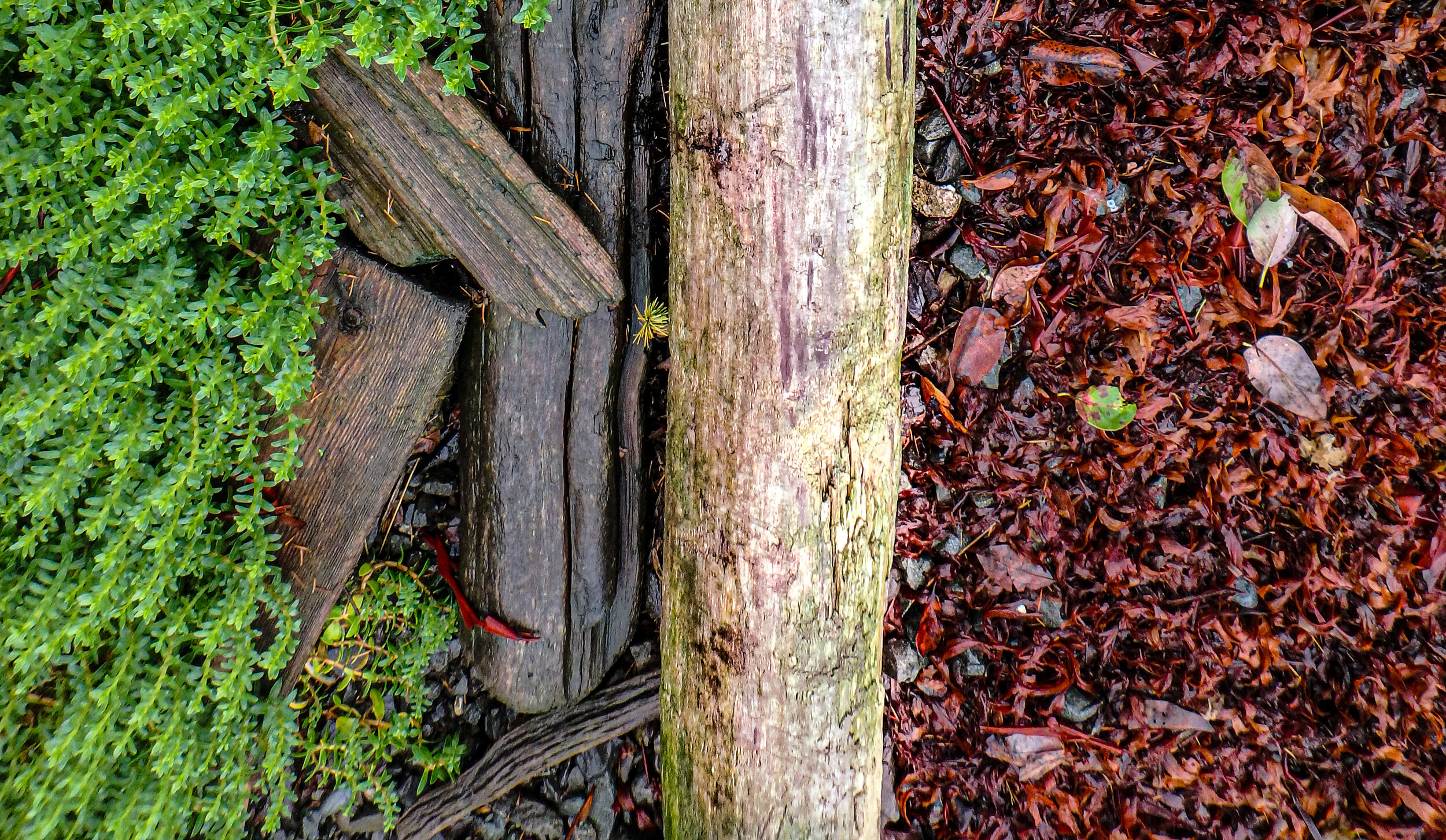Text and photos by Matt Axling, Yellow Island Steward
Yellow Island is the ancestral homeland of the Coast Salish people. The Nature Conservancy acknowledges and honors the longstanding stewardship of this island by the Lhaq’temish (Lummi), Tulalip, Samish and S’Kallam tribes as well as the Saanich Nation. We offer our gratitude to the First Peoples for their care for and teachings about this land and our relations. May we honor and continue to learn from these teachings.
Yellow Island isn’t known for its trees. When people think of Yellow Island, most think of an open prairie filled with spring wildflowers and native grasses. But if you look up, you might see one of seven types* of trees that call Yellow Island home. Due to a history of Coast Salish burning and stewardship that promoted the camas plant, a practice TNC has continued during our time in caring for this place, trees don’t grow in abundance on Yellow Island as compared to surrounding islands. But to me, the trees are an important and steady presence on the island amongst an ever-changing understory.
Douglas-fir tree (Pseudotsuga menziesii)
My favorite tree on the island is a Douglas-fir tree located on the north west side of the island. It has severe fire scars, providing evidence of how the Coast Salish used fire as a tool to maintain the prairie habitat since time immemorial. When The Nature Conservancy cored this tree, we found fire scars which date back 250 years. Today the tree continues to live despite a hole at the base of the tree which likely only leaves a single pathway for xylem and phloem to pass between the tree’s root system up to the canopy. Similar to many places in the Pacific Northwest, Douglas-fir trees are the most common trees on Yellow Island. This is true both because of their ability to be the pioneer tree species after disturbance as well as its ability to survive moderate fires, due to its thick bark.
Riding out windstorms on the island is both exciting and a bit nerve wracking. After a storm has passed, I always walk the island to assess any damage and to prioritize cleanup projects. As I walk up the hill to the burned Douglas fir tree, I always approach with a subtle sense of trepidation. But this tree has stood strong, and continues to do so in spite of tremendous challenges. I try to incorporate its tenacity, acceptance and adaptability into my life every day.
Pacific Madrone (Arbutus menziesii)
I have paddled most of the Puget Sound between Olympia and Blaine. I am a kayaker who has a healthy respect for the wind and currents of the Salish Sea, and I typically adhere to a strict “swim to shore” policy when I’m paddling. Because of that, I spend most of my time puttering along the shoreline in shallow water and enjoying the nearshore environment. My favorite Puget Sound tree is the madrone tree. If there is a madrone tree that is hanging out over the water, I can’t help but steer my kayak in its direction and quietly glide beneath its branches.
People connect with the madrone tree on Yellow Island. Generations of kids have been dared to see how far out over the water they can balance on their branches.
As summer turns to fall, the madrone tree sheds its paper-thin bark. To me, the sound that most exemplifies fall on Yellow Island is the sound of madrone tree bark flapping in the wind.
I often find people enjoying a peaceful moment on the bench below the two largest madrone trees on the island.
The Saanich people believe that the madrone tree anchored their canoes during the Great Flood. The winding branches of the madrone tree have interwoven themselves into the human experience.
On Yellow Island, one can’t help but notice the stands of madrone trees. They cling to the clay and rocky cliffs above the seven Yellow Island beaches. Madrone root systems are adept at penetrating deep into rocky soil and can search out water stored in rock fractures. They play a significant role in stabilizing the clay cliffs of the Puget Sound that are remnants of the last ice age.
During wind storms, madrone berries are often thrown to the ground which entice the occasional deer to swim over to Yellow Island.
The winds rip the paper-thin bark from the madrone trunk, and the Yellow Island beaches turn into a blanket of red discarded bark.
Grand fir (Abies Grandis)
I usually end the day on Yellow Island by sitting on the west spit to watch the sunset. Every night, about 15 minutes before sunset, several groups of crows fly across San Juan Channel and land in a grand fir tree on Yellow Island. Groups of crows are often noisy – they might be trying to alert others to the presence of an owl or chase a bald eagle from their territory. But when they fly to Yellow Island in the evening, they are absolutely silent. They sit quietly in a large grand fir tree, and we watch the sunset together. As soon as the sun goes behind the distant Canadian Gulf Islands, they fly off for the night.
Yellow Island is an anthropogenic prairie. This means that humans have played a role in creating the unique conditions which allow the prairie plants to thrive. As mentioned before, the Coast Salish burned the island to create ideal conditions for growing camas. The Nature Conservancy continued this stewardship through 22 controlled burns over the last two decades. The grand fir tree has a thin bark and is not well adapted to fire. Because of this, the grand fir trees on the island stand in areas which have not been burned in recent memory.
In Pacific Northwest coastal areas, about 70% of a bald eagle’s diet is made up of fish. But they will also prey on birds, small mammals and scavenge carrion when other food sources are not readily available.
The western side of Yellow Island is teeming with life. Fish congregate in the waters of San Juan Channel and seals give birth on the sandy beaches. Because of this, bald eagles love to perch in the grand firs on the western side of the island and keep tabs on available food sources. From these grand fir trees, they can swoop out to grab unsuspecting fish. While it is unusual for eagles to prey on live seal pups, they will definitely eat the carcass of seals pups who die on the beach.
The older trees on this island have seen such much change in their lifetimes. They watched the Coast Salish steward this island since time immemorial. They saw George Vancouver’s ship sail into the San Juan Islands and witnessed the subsequent era of colonialization. They were there when the railway purchased the island and when a couple from Orcas Island built a driftwood cabin after World War II. They have witnessed thousands of people flock to the island to marvel at the fields of spring wildflowers. The trees have survived fires, windstorms, snow and drought.
While these trees have experienced so much, what lies ahead in their future? What stories have yet to be written? At the Nature Conservancy, we hope that the trees on Yellow Island will see a twofold process which will guide the stewardship of the island forward. We will use the best science available to determine unique strategies to build a resilient landscape in the face of climate change. We will also elevate indigenous voices in an effort to learn how the Coast Salish stewarded this island in the past. By incorporating science and a wider array of voices and perspectives into the stewardship of the island, our hope is that the trees of Yellow Island will continue to prosper and write new stories within their rings each year.
* The seven types of trees on Yellow island:
Arbutus menziesii – Pacific madrone
Juniperus maritima (=J. scopulorum) - Rocky Mountain juniper
Salix scouleriana - Scouler's willow
Quercus garryana - Garry oak
Abies grandis - grand fir
Pinus contorta – Shore pine
Pseudotsuga menziesii - Douglas fir
Taxus brevifolia - Pacific yew















































